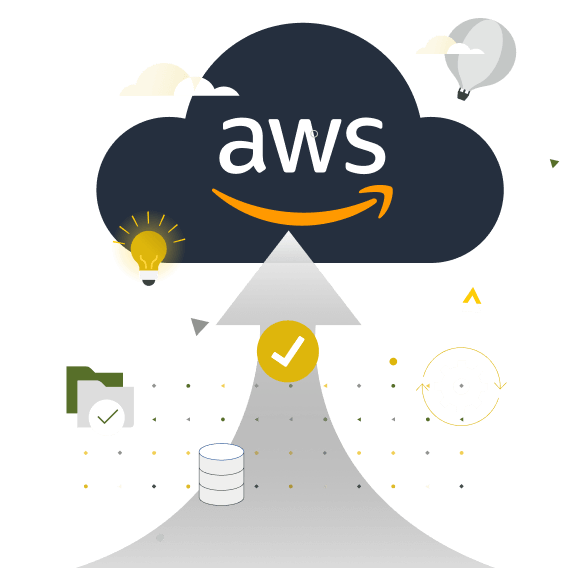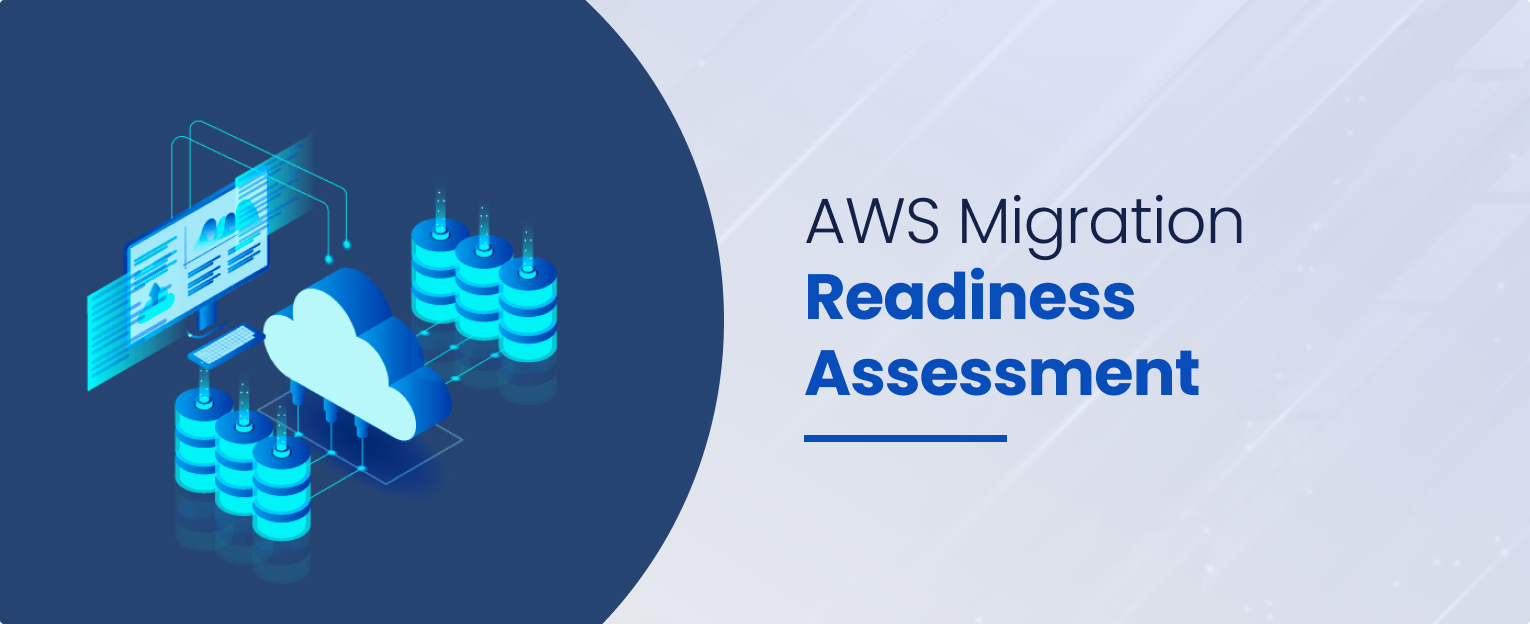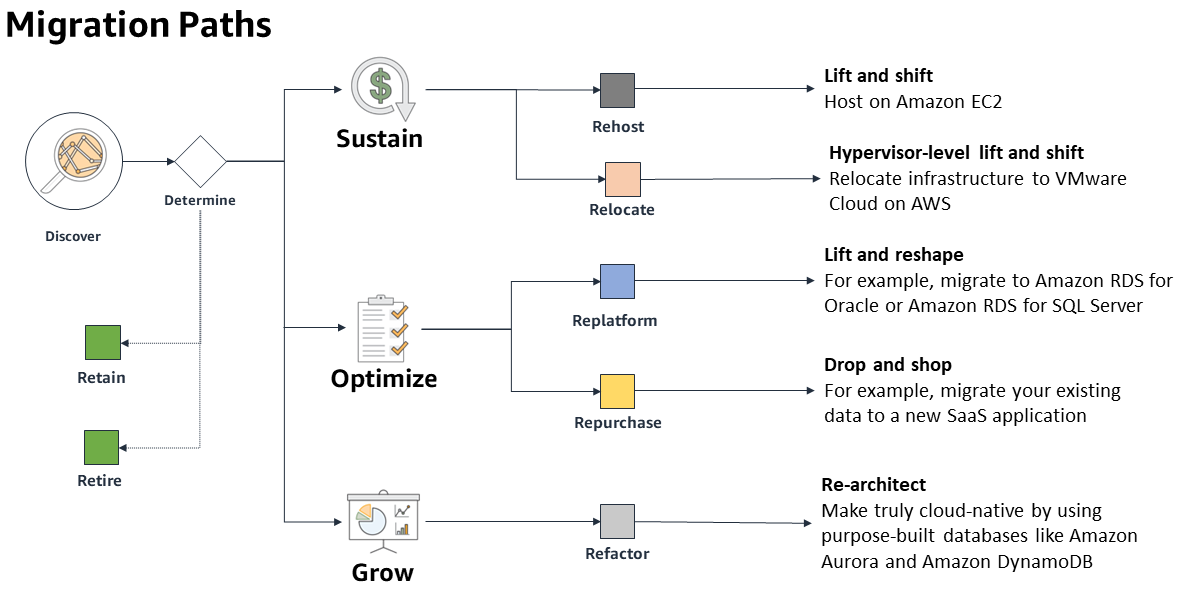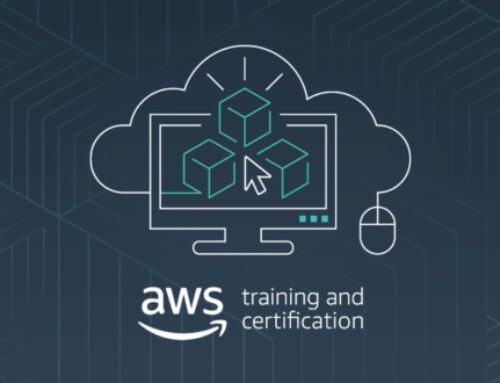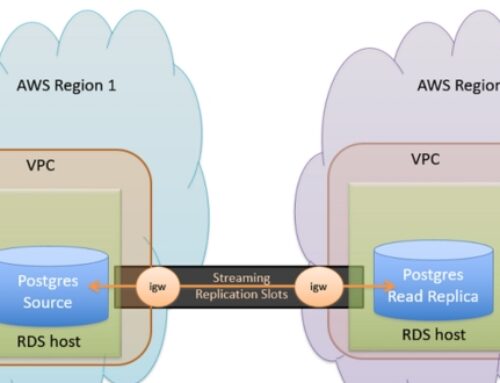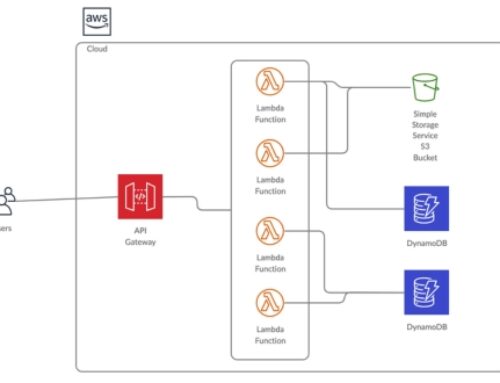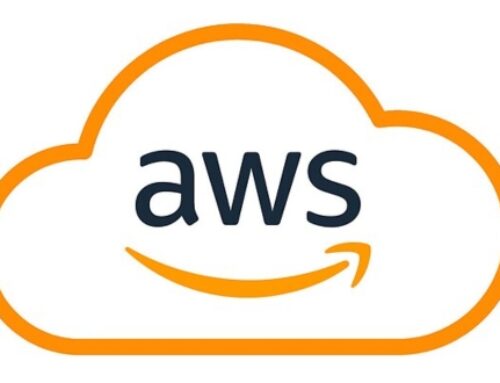Introduction to AWS Migration
In this section, we delve into the fundamental aspects of cloud migration, emphasizing the strategic significance and key benefits of adopting AWS.
Overview of Cloud Migration
Cloud migration represents a transformative shift, where businesses transition their IT resources, applications, and data from on-premise environments to cloud-based solutions. This shift is driven by the need for enhanced scalability, flexibility, and cost efficiency. Within the expansive realm of cloud services, Amazon Web Services (AWS) stands out as a leading provider, offering a comprehensive suite of tools and solutions.
Cloud migration involves the seamless transfer of digital assets to virtual servers hosted in AWS, facilitating a paradigm shift from traditional infrastructure to a dynamic and scalable cloud environment. This transition empowers organizations to leverage AWS’s global infrastructure, ensuring robust performance, reliability, and accessibility.
Importance of Strategic AWS Migration
Strategic migration to AWS involves meticulous planning and execution to maximize the benefits of cloud adoption. Businesses must recognize that migration is not merely a technical endeavor; it is a strategic business decision with far-reaching implications. A well-thought-out migration strategy aligns with organizational goals, addresses current challenges, and positions the business for future growth.
Strategic AWS migration enables companies to modernize their IT infrastructure, optimize costs, and enhance operational efficiency. It fosters innovation by providing access to cutting-edge technologies and services within the AWS ecosystem. Moreover, a strategic approach ensures minimal disruption to ongoing operations, promoting a smooth transition to the cloud.
Key Benefits of Migrating to AWS
Migrating to AWS offers a myriad of advantages that contribute to the overall success and competitiveness of businesses.
- Scalability and Flexibility: AWS provides elastic scalability, allowing organizations to scale resources up or down based on demand. This flexibility ensures optimal performance and cost-effectiveness.
- Cost Optimization: AWS’s pay-as-you-go model and diverse pricing options enable businesses to optimize costs, paying only for the resources they consume. This aligns with cost-effective resource allocation and budget management.
- Global Reach: AWS boasts a vast global infrastructure with data centers strategically positioned around the world. This global reach ensures low-latency access and reliable performance for users across diverse geographic locations.
- Security and Compliance: AWS prioritizes security, offering robust measures such as encryption, access controls, and compliance certifications. Migrating to AWS ensures a secure environment that meets industry-specific compliance standards.
- Innovation Acceleration: AWS continually introduces new services and features, providing businesses with opportunities to innovate and stay ahead in a rapidly evolving digital landscape.
Understanding Your Current Infrastructure
In this section, we explore the essential steps involved in comprehending and evaluating the existing infrastructure before embarking on the AWS migration journey. A thorough understanding of the current infrastructure sets the foundation for a seamless and effective migration process.
Infrastructure Assessment
Importance of Assessing Existing Infrastructure
Before initiating any migration efforts, organizations must conduct a comprehensive assessment of their current infrastructure. This involves a holistic review of hardware, software, networking components, and the overall IT environment. The goals of this assessment are to identify existing strengths, weaknesses, and dependencies that may impact the migration strategy.
Components of Infrastructure Assessment
- Hardware Inventory: Cataloging all physical hardware components such as servers, storage devices, and networking equipment. This includes details like specifications, age, and utilization metrics.
- Software Audit: Documenting the software applications in use, their versions, dependencies, and licensing details. This step ensures compliance and aids in planning for software-related migration challenges.
- Network Configuration: Analyzing the network architecture, including routers, switches, and firewalls. Understanding network configurations helps in planning for connectivity requirements in the AWS cloud.
- Data Storage and Management: Evaluating how data is stored, accessed, and managed. This includes assessing databases, file systems, and data retention policies.
Challenges and Solutions
- Challenge: Legacy Systems and Outdated Technology
Solution: Identify legacy systems and outdated technology that may pose challenges during migration. Develop strategies for modernization or replacement.
- Challenge: Complex Interdependencies
Solution: Map dependencies between different infrastructure components and applications. Prioritize migration based on interdependencies to maintain functionality.
- Challenge: Incomplete Documentation
Solution: Where documentation is lacking, engage with IT teams and stakeholders to gather comprehensive information. Leverage automated tools for discovery where applicable.
Inventory and Application Mapping
- Creating an Inventory
Once the infrastructure is assessed, the next step is to create a detailed inventory of all assets and components. This inventory serves as a reference point for planning and executing the migration.
- Asset Identification: Enumerate all hardware, software, and networking assets identified during the infrastructure assessment. Use unique identifiers for each asset.
- Categorization: Group assets based on their function, criticality, and interdependencies. This categorization aids in prioritizing migration efforts.
Application Mapping
Mapping applications is a critical aspect of understanding the relationships and dependencies among different software components.
- Application Identification: Document all applications within the inventory, including their versions, functionalities, and integration points.
- Dependency Mapping: Identify and document dependencies between applications. Understand how data flows between different components and systems.
Challenges and Solutions
- Challenge: Incomplete Application Visibility
Solution: Collaborate with application owners and stakeholders to gather comprehensive information. Leverage automated discovery tools to enhance visibility.
- Challenge: Dynamic Environments
Solution: Implement continuous monitoring to capture changes in real-time. Maintain an updated application map throughout the migration process.
Performance Analysis
- Assessing Performance Metrics
A critical aspect of understanding the current infrastructure is evaluating its performance. This involves analyzing various performance metrics to identify bottlenecks, resource utilization, and areas for improvement.
- Performance Metrics: Gather data on CPU utilization, memory usage, disk I/O, and network bandwidth. Evaluate historical performance trends to identify patterns.
- User Experience Analysis: Consider end-user experience by analyzing response times, latency, and overall system responsiveness.
- Capacity Planning
Capacity planning involves forecasting resource requirements to ensure that the migrated infrastructure meets performance expectations.
- Resource Utilization Trends: Evaluate historical data to understand resource utilization patterns during peak and off-peak periods.
- Scalability Requirements: Identify scalability needs and plan for the ability to scale resources dynamically based on demand.
Challenges and Solutions
- Challenge: Inaccurate Performance Metrics
Solution: Deploy monitoring tools to capture accurate performance data. Conduct load testing to simulate real-world scenarios.
- Challenge: Lack of Scalability
Solution: Plan for scalability by adopting AWS services that allow dynamic resource provisioning. Implement auto-scaling where applicable.
AWS Migration Readiness Assessment
In this section, we delve into the critical process of evaluating an organization’s readiness for an AWS migration. Conducting a comprehensive readiness assessment is pivotal in identifying challenges, mitigating risks, and ensuring a smooth transition to the AWS cloud.
Assessing Organizational Readiness
Importance of Organizational Readiness
Organizational readiness encompasses the people, processes, and culture that collectively influence the success of an AWS migration. Assessing this readiness is a foundational step in understanding how prepared the organization is for the significant changes associated with cloud adoption.
Components of Organizational Readiness
Leadership Commitment: Evaluate the commitment of leadership to the migration initiative. Leadership support is crucial for securing necessary resources and driving cultural change.
- Skills and Training: Assess the existing skill set within the organization. Identify gaps in skills related to AWS services, cloud architecture, and DevOps practices. Develop training programs to address these gaps.
- Communication and Change Management: Evaluate communication channels and change management processes. Effective communication is essential to ensure that stakeholders understand the migration objectives and their roles in the process.
- Collaboration and Cross-Functional Teams: Assess the level of collaboration between different teams within the organization. Establishing cross-functional teams fosters collaboration and streamlines communication during the migration.
Challenges and Solutions
- Challenge: Resistance to Change
Solution: Implement change management strategies, communicate the benefits of migration, and involve employees in the decision-making process.
- Challenge: Lack of Skills
Solution: Develop a comprehensive training program. Leverage AWS training resources, certifications, and external training providers to enhance skills.
- Challenge: Insufficient Communication
Solution: Establish clear communication channels, conduct regular updates, and create a migration communication plan. Address concerns and provide forums for feedback.
Identifying Potential Challenges
- Anticipating Challenges in AWS Migration
Identifying potential challenges before they manifest is crucial for proactive planning and risk mitigation. These challenges can span technical, operational, and cultural aspects of the organization.
- Technical Challenges: Assess the compatibility of existing applications with AWS services. Identify dependencies, potential bottlenecks, and areas that may require refactoring.
- Operational Challenges: Evaluate how daily operations may be impacted during the migration. Consider factors such as downtime, data transfer challenges, and the learning curve associated with new tools.
- Cultural Challenges: Assess the existing organizational culture. Identify aspects of the culture that may resist or support the changes brought about by cloud migration.
- Risk Assessment and Prioritization
Prioritize identified challenges based on their potential impact on the migration process and the overall business operations. Establish risk mitigation strategies and contingency plans for high-priority challenges.
Challenges and Solutions
- Challenge: Application Compatibility
Solution: Conduct thorough application assessments, utilize AWS migration tools, and consider refactoring or re-platforming where necessary.
- Challenge: Operational Disruptions
Solution: Develop a detailed migration plan that includes provisions for minimizing downtime. Implement gradual migration strategies and conduct thorough testing.
- Challenge: Cultural Resistance
Solution: Foster a culture of collaboration and innovation. Provide forums for open communication, address concerns, and highlight the benefits of cloud adoption.
Mitigating Risks in Migration
- Developing a Risk Mitigation Plan
A robust risk mitigation plan is essential for addressing challenges and uncertainties associated with AWS migration. This plan should include specific actions, responsibilities, and timelines for risk resolution.
- Risk Identification: Continuously monitor and identify new risks as the migration progresses. Encourage stakeholders to report potential risks promptly.
- Risk Analysis: Assess the potential impact and likelihood of each identified risk. Prioritize risks based on their severity and relevance to the migration objectives.
- Risk Mitigation Strategies: Develop proactive strategies for mitigating identified risks. These strategies may include process improvements, resource allocation, or contingency plans.
- Communication and Transparency
Maintain transparent communication throughout the organization regarding identified risks, mitigation strategies, and progress updates. This transparency fosters trust and ensures that stakeholders are informed and engaged.
Challenges and Solutions
- Challenge: Uncertain Dependencies
Solution: Conduct thorough dependency mapping. Engage with application owners and stakeholders to understand interdependencies. Plan for potential changes in dependencies.
- Challenge: Resource Constraints
Solution: Optimize resource allocation based on the prioritized risks. Seek additional resources if necessary and adjust timelines accordingly.
- Challenge: Lack of Visibility
Solution: Implement monitoring and reporting mechanisms to enhance visibility. Utilize AWS tools for real-time insights into migration progress and potential risks.
In conclusion, a comprehensive AWS Migration Readiness Assessment involves evaluating organizational readiness, identifying potential challenges, and implementing robust risk mitigation strategies. This proactive approach sets the stage for a successful migration by addressing both technical and non-technical aspects of the transition to the AWS cloud. Organizations that invest time and effort in readiness assessment are better positioned to navigate the complexities of migration and reap the full benefits of cloud adoption.
Selecting the Right AWS Services
In this section, we explore the crucial process of selecting the right AWS services tailored to the unique characteristics of your workload. The strategic choice of services plays a pivotal role in optimizing performance, scalability, and resource utilization during the migration process.
Analyzing Workload Characteristics
- Workload Assessment
Before embarking on the selection of AWS services, it is imperative to conduct a comprehensive analysis of the workload characteristics. This involves understanding the nature of applications, data dependencies, performance requirements, and any specific compliance considerations.
- Application Architecture: Assess the architecture of existing applications. Identify whether they follow a monolithic or microservices-based architecture, as this influences the selection of AWS services.
- Data Dependencies: Understand the dependencies between different components of the workload. Identify data flow patterns and dependencies that may impact service selection.
- Performance Requirements: Analyze performance expectations and requirements. Consider factors such as response times, throughput, and latency, as they guide the choice of services optimized for performance.
Choosing Appropriate AWS Services
- Strategic Service Selection
Based on the workload characteristics identified, strategically choose AWS services that align with the specific needs of each application or component. Consider the following AWS services that cater to diverse requirements:
- Compute Services: Evaluate options such as Amazon EC2 for virtual servers, AWS Lambda for serverless computing, and AWS Fargate for containerized workloads.
- Database Services: Choose from Amazon RDS for managed relational databases, Amazon DynamoDB for NoSQL databases, and Amazon Aurora for high-performance databases.
- Storage Services: Assess Amazon S3 for object storage, Amazon EBS for block storage, and Amazon EFS for scalable file storage based on data access patterns.
Scalability and Resource Requirements
- Planning for Scalability
Scalability is a critical factor in ensuring that the selected AWS services can efficiently handle varying workloads. Consider the following aspects when planning for scalability:
- Auto-Scaling: Leverage AWS Auto Scaling to automatically adjust compute capacity based on demand, ensuring optimal performance during peak periods.
- Resource Provisioning: Align resource provisioning with expected workload fluctuations. Utilize AWS services that allow dynamic scaling to accommodate changes in demand.
- Monitoring and Optimization: Implement robust monitoring using AWS CloudWatch to track resource utilization. Optimize resource allocation based on real-time insights to enhance efficiency.
Strategic service selection, guided by a thorough analysis of workload characteristics and scalability requirements, forms the foundation for a successful AWS migration. This section equips organizations with the knowledge needed to make informed decisions, ensuring that AWS services are chosen strategically to meet the diverse needs of their workloads.
Cost Estimation and Optimization
In this section, we delve into the critical aspects of cost estimation and optimization, ensuring that organizations not only anticipate migration costs but also implement strategies to optimize ongoing expenses within the AWS environment.
Estimating Migration Costs
- Comprehensive Cost Analysis
Before initiating migration, conduct a meticulous estimation of migration costs. Consider the following factors:
- Data Transfer Costs: Evaluate the costs associated with transferring data into and out of AWS. Plan for potential data transfer charges based on the volume and destination of data.
- Infrastructure Costs: Estimate the expenses related to compute resources, storage, and other infrastructure components. Consider factors such as the chosen AWS service pricing and resource configurations.
- Licensing Costs: If migrating existing software with specific licenses, factor in licensing costs associated with AWS services.
Optimizing Costs in AWS
- Strategies for Ongoing Cost Optimization
Once migrated, ongoing cost optimization is crucial for maximizing the efficiency of AWS resources. Implement the following strategies:
- Reserved Instances (RIs): Utilize RIs for predictable workloads to benefit from significant cost savings compared to on-demand pricing.
- Spot Instances: Leverage spot instances for non-time-sensitive workloads, taking advantage of spare AWS capacity at lower costs.
- Right-Sizing Resources: Continuously monitor resource utilization and adjust instances to the most cost-effective sizes. This ensures that resources match actual workload requirements.
Utilizing AWS Pricing Models
- Understanding AWS Pricing Structures
AWS offers various pricing models to cater to different use cases. Familiarize yourself with these models:
- Pay-as-You-Go: Ideal for variable workloads, this model charges users based on actual usage without upfront commitments.
- Reserved Instances (RIs): Provides discounted pricing for fixed-term commitments, suitable for steady-state workloads with predictable usage.
- Spot Instances: Allows users to bid on unused AWS capacity, offering potential cost savings for flexible workloads.
By understanding and implementing these strategies, organizations can not only estimate migration costs accurately but also optimize ongoing expenses, ensuring a cost-effective and efficient AWS environment. This comprehensive approach to cost management contributes to the overall success and sustainability of AWS migration endeavors.
Creating a Detailed Migration Plan
In this section, we focus on the pivotal task of creating a detailed migration plan, providing organizations with a structured approach to guide them through the intricate process of migrating to AWS.
Developing a Step-by-Step Plan
- Methodical Planning Process
Develop a comprehensive migration plan that outlines step-by-step procedures for a seamless transition:
- Workload Prioritization: Identify and prioritize workloads based on business-criticality and dependencies to determine the migration sequence.
- Dependency Mapping: Create a detailed map of application dependencies, ensuring a thorough understanding of interdependencies between different components.
- Resource Configuration: Define the desired AWS resource configurations, including compute instances, storage, and network settings.
Establishing Milestones and Timelines
- Structured Milestone Setting
Establish clear milestones and timelines to track progress and ensure alignment with organizational goals:
- Phased Rollouts: Break down the migration into phases with specific milestones, allowing for focused implementation and monitoring.
- Timeline Alignment: Align the migration timeline with business objectives, taking into account any critical periods or constraints.
- Regular Assessments: Conduct regular assessments against milestones to measure progress and identify areas that may require adjustments.
Involving Stakeholders in Planning
- Collaborative Planning Approach
Involve stakeholders at every stage to ensure alignment with business objectives and smooth execution:
- Cross-Functional Collaboration: Encourage collaboration between IT, operations, and business teams to address diverse perspectives and requirements.
- Communication Strategies: Implement effective communication strategies to keep all stakeholders informed about the migration plan, progress, and any potential impacts.
- Feedback Mechanisms: Establish feedback mechanisms to gather input from stakeholders, fostering a collaborative and inclusive planning process.
By adhering to a detailed migration plan that incorporates step-by-step procedures, structured milestones, and stakeholder involvement, organizations can navigate the complexity of AWS migration with precision and confidence. This approach lays the groundwork for a successful migration, minimizing disruptions and maximizing the benefits of transitioning to the AWS environment.
Executing the Migration Process
This section delves into the actual execution of the migration process, providing a comprehensive guide to preparing, implementing, and validating the migration to ensure a smooth transition to the AWS environment.
Preparing for the Migration Day
- Rigorous Pre-Migration Preparation
- Data Backup: Ensure comprehensive data backup to safeguard against any unforeseen issues during migration, allowing for data recovery if needed.
- Communication Plan: Develop a robust communication plan to keep stakeholders informed about the impending migration, including potential impacts and downtime expectations.
- Resource Allocation: Allocate necessary resources for the migration day, including personnel, tools, and any additional infrastructure requirements.
Implementing Workload Migration
- Seamless Workload Transition
- Phased Migration: Execute the migration in well-defined phases, prioritizing workloads based on the established plan to manage complexities effectively.
- Real-time Monitoring: Employ monitoring tools, such as AWS CloudWatch, to track the migration progress in real-time, identifying and addressing any issues promptly.
- Automated Migration Tools: Utilize AWS migration tools to automate the transfer of workloads, minimizing manual intervention and reducing the risk of errors.
Post-Migration Validation
- Ensuring a Successful Transition
- Validation Checks: Conduct thorough validation checks post-migration to ensure that all components are functioning as expected and that data integrity is maintained.
- Performance Testing: Perform performance testing to evaluate the efficiency of migrated workloads, identifying any optimization opportunities.
- User Acceptance Testing (UAT): Engage in UAT processes to gather feedback from end-users, ensuring that the migrated applications meet their functional requirements.
By meticulously preparing for the migration day, implementing workloads systematically, and validating the post-migration environment, organizations can execute a seamless migration process to AWS. This section equips readers with practical insights to navigate each stage of the migration, fostering a successful transition and minimizing potential disruptions.
Monitoring and Performance Optimization
This section focuses on the crucial aspects of monitoring and optimizing performance post-migration, ensuring that organizations harness the full potential of their AWS environment with continuous oversight and strategic optimization.
Continuous Monitoring Strategies
- Proactive Monitoring Approaches
- Real-Time Alerts: Implement real-time alerting mechanisms using AWS CloudWatch to receive immediate notifications about any irregularities in the environment.
- Automated Scaling Policies: Set up automated scaling policies to dynamically adjust resources based on workload demands, optimizing performance and cost-efficiency.
Performance Optimization Techniques
- Strategic Performance Enhancement
- Resource Right-Sizing: Continuously analyze resource utilization and adjust instance sizes based on actual performance requirements, avoiding over-provisioning.
- Load Balancing: Implement AWS load balancing services to distribute workloads evenly, optimizing resource utilization and ensuring high availability.
Leveraging AWS Monitoring Tools
- Utilizing Native AWS Tools
- AWS CloudWatch: Leverage CloudWatch for comprehensive monitoring, logging, and alerting capabilities to gain insights into the performance of AWS resources.
- AWS Trusted Advisor: Utilize Trusted Advisor to receive personalized recommendations for optimizing performance, security, and cost-efficiency.
By adopting continuous monitoring strategies, implementing performance optimization techniques, and leveraging native AWS monitoring tools, organizations can ensure that their AWS environment operates at peak efficiency. This proactive approach to monitoring and optimization is essential for maintaining optimal performance, identifying potential issues, and maximizing the benefits of AWS migration.
Post-Migration Best Practices
This section outlines essential post-migration best practices to solidify the success of the migration process, ensuring ongoing data integrity, team proficiency, and continuous improvement within the AWS environment.
Ensuring Data Integrity
- Robust Data Management Practices
- Regular Audits: Conduct periodic data audits to verify and maintain data integrity, addressing any inconsistencies promptly.
- Data Backups: Implement regular backup strategies to safeguard against data loss and ensure quick recovery in case of unforeseen issues.
Training Teams on AWS
- Empowering Teams for Success
- Comprehensive Training Programs: Provide ongoing training to teams on AWS services, ensuring they stay abreast of new features and best practices.
- Certification Initiatives: Encourage team members to pursue AWS certifications for in-depth knowledge and expertise in cloud technologies.
Continuous Improvement Measures
- Iterative Enhancement Strategies
- Feedback Mechanisms: Establish mechanisms for collecting feedback from users and teams, facilitating continuous improvement based on real-world experiences.
- Periodic Assessments: Conduct periodic assessments of the AWS environment, identifying opportunities for optimization, security enhancements, and cost savings.
By embracing these post-migration best practices, organizations can secure their AWS environment, empower teams with the necessary skills, and foster a culture of continuous improvement, ensuring long-term success and maximizing the benefits of their migration to AWS.
Measuring Success and Key Metrics
In this pivotal section, we delve into the essential process of measuring the success of AWS migration through the establishment of Key Performance Indicators (KPIs), analyzing success metrics, and implementing iterative improvements for ongoing migration enhancements.
Establishing Key Performance Indicators (KPIs)
- Strategic Performance Benchmarks
- Defining KPIs: Establish clear KPIs aligned with business objectives to quantitatively measure the success of AWS migration.
- Performance Tracking: Regularly monitor and track KPIs to gauge the impact of migration on various facets of organizational performance.
Analyzing Success Metrics
- Comprehensive Metric Evaluation
- Cost Savings: Analyze cost-related metrics to measure the effectiveness of migration in achieving financial objectives.
- Performance Efficiency: Evaluate metrics related to workload performance and efficiency post-migration.
Iterative Improvements in Migration
- Continuous Enhancement Strategies
- Feedback Utilization: Leverage feedback from KPI analysis to identify areas for improvement and implement iterative enhancements.
- Adaptation to Changing Needs: Adjust migration strategies based on evolving business requirements and technological advancements.
By systematically establishing KPIs, analyzing success metrics, and implementing iterative improvements, organizations can ensure not only the success of their initial AWS migration but also ongoing optimization to meet evolving business goals and industry trends.
Conclusion
Navigating the intricate journey of AWS migration requires meticulous planning, strategic execution, and continuous assessment. By embracing a comprehensive approach from infrastructure assessment to post-migration best practices, organizations can unlock the full potential of AWS.
The strategic selection of AWS services, meticulous cost estimation, and the creation of a detailed migration plan serve as the foundation for a successful migration. Continuous monitoring, performance optimization, and post-migration best practices ensure sustained efficiency and data integrity in the AWS environment.
As organizations measure success through established KPIs and metrics, the iterative nature of migration planning allows for ongoing improvements. This holistic approach not only facilitates a seamless transition to AWS but positions businesses to thrive in the dynamic landscape of cloud computing, realizing the full benefits of scalability, flexibility, and innovation.

